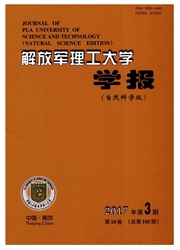

 中文摘要:
中文摘要:
为了研究广义奇异值分解(GSVD)算法在电离层三维层析中的可行性,利用IR12001模型所提供的电子密度场构建的TEC模拟观测值。根据不同的测站、卫星源和初值,设计了4组模拟实验,利用广义奇异值分解算法反演电子密度。通过对比电子密度的模拟反演值和模拟真值,分析了站点分布、射线数量和初值选取对层析结果的影响。研究结果表明,广义奇异值分解算法理论上可用于电离层三维层析研究。在理想情况下,利用广义奇异值分解算法可较好地重建电离层电子密度三维分布。但当测站分布不好,或有效射线数较少时,重建质量将会受到较大的影响,在实际应用中合理选取初值可较好地重建电离层三雏电子密度分布。
 英文摘要:
英文摘要:
The simulative TEC observation value was obtained using the electron density distribution provided by IRI2001 model. The feasibility of application of generalized singular value decomposition (GSVD) algorithm to 3-D computerized ionosphere tomography (CIT) was investigated. Four simulative experiments were designed according to different stations, satellites and apriori values. In each experiment, the electron density was reconstructed using GSVD algorithm. The effect of station distribution, ray number, and apriori value on the result of CIT was analyzed according to the comparison between the simulative re- built value and the simulative real value. Investigations indicate that the GSVD algorithm can be applied to the 3-D electron density distribution CIT in the ideally situation, and that the 3-D electron density distri-bution can be well reconstructed using the GSVD algorithm in reasonable situation, but the result will be degraded if the station distribution is unreasonable or the number of effective rays is not enough. The 3-D electron density distribution can be well reconstructed in the real situation if better apriori values are used.
 同期刊论文项目
同期刊论文项目
 同项目期刊论文
同项目期刊论文
 期刊信息
期刊信息
